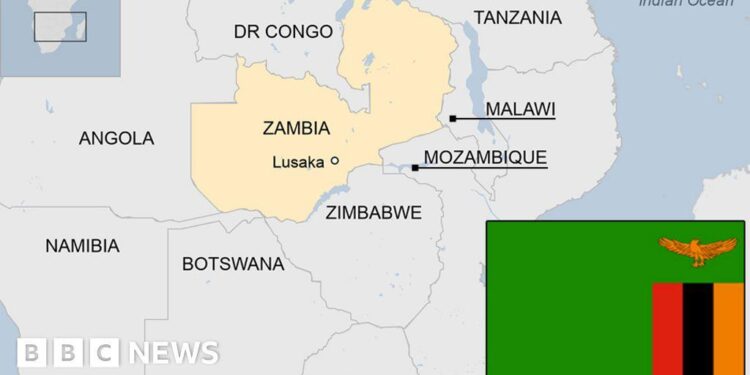Title: Unlocking the DRC’s Economic Promise: Strategic Opportunities for Zambia and Neighboring Countries
The Democratic Republic of Congo (DRC) is rapidly gaining recognition as a pivotal economic hub in Central Africa, offering vast prospects for neighboring nations such as Zambia. Boasting abundant mineral reserves, a burgeoning population, and escalating demand across various sectors, the DRC stands out as an attractive destination for trade and investment. This article delves into how Zambia and its border countries can capitalize on their proximity, existing regional agreements, and shared interests to harness the DRC’s expanding market potential. By analyzing recent trends and success stories, we highlight essential strategies to thrive in this evolving environment while assessing the broader impact on regional economies.
Harnessing the DRC’s Economic Growth Potential: A Regional Perspective
The Democratic Republic of Congo is emerging as a formidable force in Africa’s economic landscape due to its extensive natural resource base—particularly cobalt, copper, diamonds, and gold—which attracts significant foreign direct investment (FDI). Alongside ongoing infrastructure upgrades in transport networks and energy supply systems, these developments are creating fertile ground for enhanced cross-border commerce.
Key sectors where Zambian enterprises—and those from adjacent countries—can find lucrative opportunities include:
- Agricultural Trade: Leveraging fertile soils on both sides of the border enables Zambian agribusinesses to export surplus crops such as maize and cassava into underserved Congolese markets.
- Mining Partnerships: Joint ventures focusing on mineral extraction technologies can improve efficiency while sharing expertise between mining companies across borders.
- Renewable Energy Projects: With persistent electricity shortages in parts of the DRC, investments by Zambian firms into solar or hydropower initiatives could meet growing energy demands.
- Infrastructure Development: Construction companies stand to benefit from contracts related to roadways, bridges, housing developments—and even urban transit systems—as urbanization accelerates within Congolese cities.
Trade facilitation frameworks like the African Continental Free Trade Area (AfCFTA) have further reduced tariffs among member states—including Zambia and the DRC—streamlining access to each other’s markets. The following table illustrates recent bilateral trade growth:
| Year | Zambia’s Exports to DRC (USD million) | DRC’s Exports to Zambia (USD million) |
|---|---|---|
| 2020 | $180M | $75M |
| 2021 | $210M | $90M |
| 2022 | $250M+ | $110M+ |
This upward trajectory highlights not only growing commercial ties but also underscores how strategic collaboration can unlock mutual prosperity throughout Southern Africa.
Strengthening Regional Trade Through Collaborative Frameworks & Agreements
Increased cooperation among Southern African nations has become instrumental in expanding market reach within Central Africa. By capitalizing on multilateral agreements such as AfCFTA alongside regional bodies like the Southern African Development Community (SADC), member states are dismantling traditional barriers that once hindered seamless trade flows.
These accords provide several advantages:
- Tariff Reductions: AfCFTA eliminates duties on approximately 90% of goods traded between signatories.
- Simplified Customs Procedures:SADC protocols promote harmonized regulations easing cross-border movement.
- Cohesive Policy Alignment:The agreements encourage synchronized standards facilitating smoother business operations regionally.
- Knowledge Exchange & Resource Sharing:
Joint initiatives foster innovation through shared research efforts tailored toward understanding consumer behavior within diverse markets.- Create joint ventures that blend local insights with external capital—enabling customized solutions addressing specific needs within Congolese communities.
- Pursue collaborative infrastructure projects enhancing connectivity—for example upgrading key transport corridors linking Lusaka with Kinshasa via improved highways or rail lines.
- The deployment of off-grid solar mini-grids serving remote communities along border regions helps alleviate chronic power shortages while reducing carbon footprints;
- The construction/upgradingof all-weather roads connecting rural production zones directlyto major trading hubs facilitates faster delivery timesand reduces post-harvest losses;
- The introductionof precision farming techniques leveraging dronesand IoT sensors improves crop yieldswhile conserving water resources;
To fully exploit these benefits requires proactive measures including:
Agrreement/Organization Name Main Advantages Offered African Continental Free Trade Area | Removal of tariffs covering most traded commodities
Southern African Development Community | Promotes deeper integration through policy coordinationInvesting in Sustainable Development To Drive Long-Term Regional Prosperity
As attention turns toward unlocking value sustainably amid rapid growth prospects across Central Africa,the importance of environmentally conscious investments cannot be overstated.
Zambia together with neighboring states should prioritize sustainable development models emphasizing renewable energy adoption,effective transportation networks,and modern agricultural technologies adapted specifically for tropical climates.
Examples include:
This approach necessitates transparent governance structures encouraging public-private partnerships(PPPs)that mobilize capital efficiently without compromising social equityor environmental integrity.Additionally,involving local communitiesin decision-making processes ensures equitable distributionof benefits derivedfrom resource exploitationand infrastructural improvements.
Governments must also establish investor-friendly policies attracting foreign direct investment(FDI)focusedon green technologiesand sustainable enterprises.By pooling expertiseacross borders,Zambia,theDRCand other neighborscan transformthe regionintoan exemplarfor responsibleeconomic expansionwithinAfrica.
Conclusion: Embracing a Shared Future Of Economic Growth In Central Africa
As Zambia alongside its neighbors explores avenues presented bythe Democratic Republicof Congo’semergingmarket,the potentialforregionaltradeandinvestmentappearsimmense.Withitsrichmineralendowment,growingurbanpopulations,andstrategiclocation,theDRCpresentsanunparalleledopportunityforexpansionbeyondnationalboundaries.
Maximizingthispotentialrequiresleveragingexistingtradeagreements,fosteringcross-borderpartnershipsandprioritizingsustainablegrowthmodels.Asregionalintegrationdeepens,businessesmustembraceinnovation,strategicinvestment,andcollaborativeframeworkstoensureinclusiveprosperityforallstakeholders.ThetimeisripeforZambiathroughcooperationwithitsneighbors,tohelptransformtheDRCsmarketintoashiningexampleoffuture-focusedeconomicdynamismacrossthecontinent.















